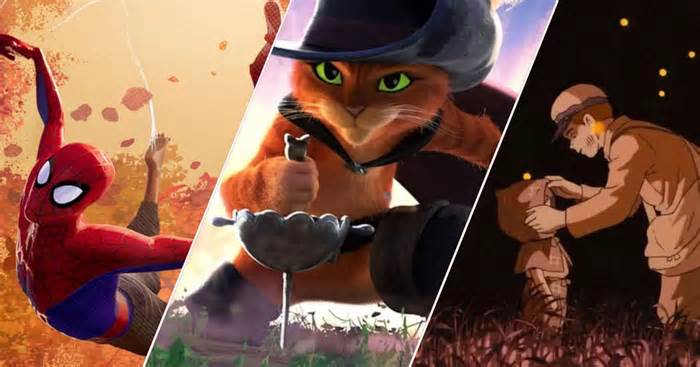Advertising
Supported by
Ghostface and meta-commentaries are back in this sequel, but the weight of obligations versus the dictates of the franchise ultimately drags it down.
Send a story to any friend.
As a subscriber, you have 10 gift pieces to offer per month. Everyone can read what you share.
By Jason Zinoman
When you purchase a price ticket for an independently reviewed movie through our site, we earn an associated commission.
It was not unexpected that Quentin Tarantino, exceptionally willing to criticize his peers’ paintings in public, told an interviewer that he did not like the original “Scream,” calling its director, Wes Craven, “the iron chain attached to his ankle.
An ungenerous observer sees a connection between this view and the fact that Craven hated Tarantino’s first film, “Reservoir Dogs,” so much that he dropped out of a screening, only to be surprised by the director himself, asking him what Craven thought. Note: Never do this to a director or a critic. Time matters.
While “Scream” has become the most beloved franchise by horror fans, with horror videos obsessed as victims or killers or both, there were always fans who felt that their self-referential humor came at the expense of fears; It was a laughing slasher-lite, usurping its audience while actually flattering it. These horror snobs, and I count myself among them, know that Wes Craven can go down his throat, however, with those videos, he decided not to.
“Scream VI” aims to seduce us. (Craven died in 2015 and paid for the triyete in the most recent film, “Scream,” ably directed by Matt Bettinelli-Olpin and Tyler Gillett. )Turns. It’s a darker entrance, most likely to break away from the conference, one in which he scratches the white mask of his serial killer Ghostface. The character’s body is also more stable, more willing to sit still, with the occasional tilt of Michael Myers. Moving from the well-lit, well-equipped homes of small towns and suburbs to the dark alleys of New York City felt like a desperate gesture (see “Friday the 13th, Part VIII: Jason Takes Manhattan”), but a surprising stalker. Footage in crowds encouraged through new thinking.
There are some really creepy and patiently laid out suspense scenes, adding an internal Halloween of an underground car that’s filled with other people in horror villain costumes, adding various Ghostfaces. It’s a well-organized vignette that, in keeping with the spirit of “Scream,” is intended as a meta-commentary on the overabundance of sautomobiley movies. But it’s hard to balance the haunting horror and complaint of quirky films, and while this sequel rarely succeeds, the weight of obligations to the dictates of the franchise eventually drags it down. down.
Based on the story from the previous film, Tara (Jenna Ortega) and her sister, Sam Carpenter (Melissa Barrera), whose last call will make some “Halloween” enthusiasts laugh unbearably, have left their damn little town of Woodsboro to attend an NYU-style school in Manhattan with a new gang of potential friends/killers. Once a masked character starts stabbing people, everyone looks at each other suspiciously and begins to break the rules of a horror movie.
With a richer character to paint than the protagonists of the first films, Barrera does an effective and sullen job betting on a tortured antihero imaginable. As the daughter of Billy Loomis (played via Skeet Ulrich), the killer from the original film, whose The Ghostly Presence Returns Here, adds new tension to the disposable victim model.
It is a film in which no less than 3 characters are brutally stabbed but do not die absurdly and yet it is also the first “Scream” of Neve Campbell without Sidney, proving that Hollywood deal negotiations are more terribly fatal than any manic scene.
Courteney Cox returns as opportunistic journalist Gale Weathers and, as is tradition, is punched in the face with panache. to struggle to read plot summaries on Wikipedia. These reminders clutter the film, though they offer opportunities for those who watched the series on Paramount to their friends and family in horror.
“Scream” has been both a mystery and a slasher, so more characters offer opportunities to divert direction, but the challenge here is rarely just an excess of people. What weighs is the feeling of the beyond and the long term. in the present: the afterlife in the way moviegoers diligently incorporate the talk of moviegoers (there’s nothing funnier than the post-killing line “I prefer ‘The Babadook'” from the fifth “Scream”), and the long-term in how some characters would possibly not die because, well, that would spoil “Scream 7” and “Scream 8. “It also gives the impression that Sidney, who is talked about several times in the script, is treated diplomatically because the filmmakers hope to bring her back for a long time. Run movies.
This is the curse of franchise cinema. Just because the cinephile character Mindy (Jasmin Savoy Brown), who delivers the classic monologue about the rules of survival, draws attention to this challenge doesn’t mean she’s going away.
Self-awareness wouldn’t solve the problems of plausibility or pacing and wouldn’t make your film any scarier. However, it can also help a comedy, and would be the most productive editing of those films, suggesting that filmmakers relax and forget altogether. about unconditional horror nerds, as well as arrogant critics of the New York Times. How about the metagame?
Scream VIRated R for bloody bites, stabbing, chatter. Duration: 2 hours minutes. In cinemas.
Advertising

